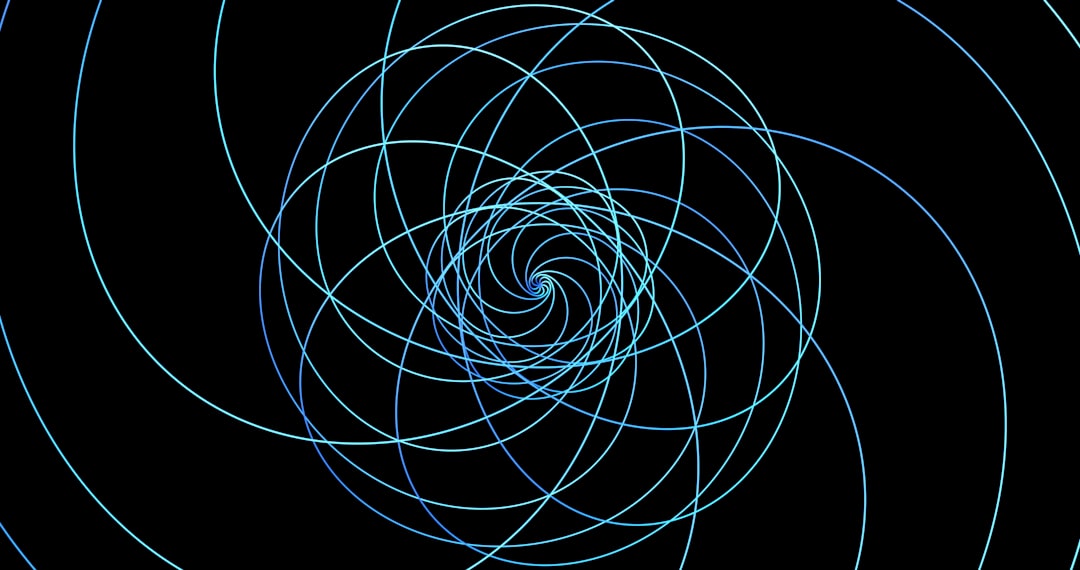Magnetic pole shift is a phenomenon that has intrigued scientists and the general public alike for centuries. It refers to the gradual movement of the Earth’s magnetic poles, which can lead to significant changes in the planet’s magnetic field. This shift is not merely a theoretical concept; it has occurred multiple times throughout Earth’s history, with profound implications for both the environment and living organisms.
As the world becomes increasingly aware of climate change and other environmental issues, understanding magnetic pole shifts has gained renewed importance. The implications of these shifts extend beyond mere curiosity; they can affect navigation systems, animal behavior, and even human technology. The concept of magnetic pole shift often conjures images of catastrophic events, but the reality is more nuanced.
While some shifts can occur rapidly, most are gradual processes that unfold over thousands of years. This slow transition allows ecosystems and species to adapt, although the potential for disruption remains significant. As researchers delve deeper into the mechanisms behind these shifts, they uncover a complex interplay of geological and magnetic forces that shape the Earth’s magnetic field.
This article aims to explore the intricacies of magnetic pole shifts, their causes, historical evidence, and their far-reaching effects on life as we know it.
Key Takeaways
- The Earth’s magnetic field is constantly shifting, with the north and south magnetic poles moving over time.
- Magnetic pole shifts are caused by changes in the Earth’s outer core, which is made of molten iron and nickel.
- Historical evidence, such as ancient pottery and geological records, shows that magnetic pole shifts have occurred throughout Earth’s history.
- Magnetic pole shifts can have significant effects on technology, including disruptions to GPS systems and communication networks.
- While magnetic pole shifts pose potential risks and challenges, scientists are working on ways to mitigate their effects and adapt to the changing magnetic field.
Understanding Earth’s Magnetic Field
To comprehend magnetic pole shifts, one must first understand the Earth’s magnetic field itself. The magnetic field is generated by the movement of molten iron and nickel in the outer core of the Earth. This dynamic process creates electric currents, which in turn produce magnetic fields.
The result is a protective shield that extends into space, deflecting harmful solar radiation and cosmic rays. The magnetic field is not uniform; it varies in strength and direction across different regions of the planet. The North and South Magnetic Poles are not fixed points; they wander over time due to changes in the Earth’s core dynamics.
The Earth’s magnetic field plays a crucial role in navigation, both for humans and animals. Compasses rely on this magnetic field to point toward magnetic north, guiding explorers and travelers for centuries. Additionally, many species of birds, fish, and other animals utilize the Earth’s magnetic field for migration and orientation.
As scientists study the fluctuations in the magnetic field, they gain insights into not only the Earth’s internal processes but also how these changes can impact life on the surface.
Causes of Magnetic Pole Shift

The causes of magnetic pole shifts are complex and multifaceted. One primary driver is the movement of tectonic plates, which can influence the flow of molten materials in the Earth’s outer core. As these plates shift, they can alter the convection currents that generate the magnetic field.
Additionally, changes in temperature and pressure within the core can lead to variations in magnetic intensity and direction. These geological processes are often slow-moving but can culminate in significant shifts over geological time scales. Another factor contributing to magnetic pole shifts is solar activity.
The Sun emits charged particles that interact with the Earth’s magnetic field, creating phenomena such as solar storms and geomagnetic reversals. These interactions can induce changes in the magnetic field’s strength and orientation. While solar activity is not a direct cause of pole shifts, it can exacerbate existing fluctuations and contribute to more rapid changes under certain conditions.
Understanding these causes is vital for predicting future shifts and their potential impacts on Earth.
Historical Evidence of Magnetic Pole Shift
| Year | Location | Shift (in degrees) |
|---|---|---|
| 1831 | James Ross Island, Antarctica | 11 |
| 1904 | Greenland | 8 |
| 1948 | Canadian Arctic | 12 |
| 2001 | North Pole | 40 |
Historical evidence of magnetic pole shifts can be found in geological records, particularly in volcanic rocks and ocean sediments. Scientists have identified patterns of geomagnetic reversals through paleomagnetic studies, which analyze the orientation of magnetic minerals in ancient rocks. These studies reveal that the Earth’s magnetic poles have reversed numerous times over millions of years, with intervals ranging from tens of thousands to millions of years between reversals.
The last major reversal, known as the Brunhes-Matuyama reversal, occurred approximately 780,000 years ago. In addition to geological evidence, archaeological findings also provide insights into past magnetic pole shifts. Ancient civilizations often recorded celestial events and navigational challenges that may have been influenced by changes in the Earth’s magnetic field.
For instance, some researchers suggest that disruptions in navigation could have contributed to the decline of certain ancient cultures. By piecing together these historical records, scientists can better understand the frequency and impact of past magnetic pole shifts, offering valuable context for current observations.
Effects of Magnetic Pole Shift on Earth
The effects of a magnetic pole shift on Earth can be profound and varied. One immediate consequence is a change in the strength and orientation of the magnetic field, which can lead to increased exposure to solar radiation. This heightened exposure may have implications for both human health and technological systems.
For instance, increased radiation levels can disrupt satellite communications and power grids, leading to potential blackouts or failures in critical infrastructure. Moreover, a shift in the magnetic poles can disrupt animal migration patterns.
Changes in this field could lead to confusion among migratory species, resulting in population declines or altered ecosystems. The interconnectedness of life on Earth means that such disruptions could have cascading effects throughout food chains and habitats.
Predicting Magnetic Pole Shift

Predicting when a magnetic pole shift will occur remains a significant challenge for scientists. While researchers have made strides in understanding past shifts through geological records, forecasting future events is more complex due to the dynamic nature of Earth’s interior processes. Current models rely on computer simulations that incorporate data from various sources, including satellite observations and seismic studies.
These models aim to identify patterns and trends that may indicate an impending shift. Despite advancements in predictive modeling, uncertainty remains a key factor in forecasting magnetic pole shifts. The irregularity of past reversals complicates efforts to establish a timeline for future events.
Some scientists suggest that monitoring changes in the Earth’s magnetic field over time could provide early warning signs of an impending shift. However, as with many natural phenomena, predicting exact timing and magnitude remains elusive.
Impact of Magnetic Pole Shift on Technology
The impact of a magnetic pole shift on technology could be significant, particularly as society becomes increasingly reliant on electronic systems. Navigation technologies such as GPS depend on stable satellite signals that can be disrupted by changes in the Earth’s magnetic field. A sudden shift could lead to inaccuracies in positioning data, affecting everything from personal navigation devices to large-scale transportation systems.
Moreover, power grids are vulnerable to geomagnetic storms associated with solar activity that may be exacerbated by a pole shift. These storms can induce electrical currents that overload transformers and disrupt power distribution networks. As society continues to integrate technology into daily life, understanding how magnetic pole shifts could affect these systems becomes increasingly critical for ensuring resilience against potential disruptions.
Animal Migration and Magnetic Pole Shift
Animal migration is intricately linked to the Earth’s magnetic field, with many species relying on it for navigation during their seasonal journeys. Birds, for example, possess specialized cells containing magnetite that allow them to detect changes in the Earth’s magnetic field. A shift in this field could lead to disorientation among migratory species, potentially resulting in altered migration routes or even population declines.
Research has shown that some animals are capable of adapting to changes in their environment; however, rapid shifts may pose significant challenges for many species. For instance, if a pole shift occurs suddenly rather than gradually, it could disrupt established migratory patterns that have evolved over millennia. The consequences could ripple through ecosystems as predator-prey relationships are altered and food availability fluctuates.
Human Adaptation to Magnetic Pole Shift
Human adaptation to a magnetic pole shift involves both technological innovation and behavioral adjustments. As awareness grows regarding potential shifts, researchers are exploring ways to enhance navigation systems’ resilience against disruptions caused by changes in the Earth’s magnetic field. This includes developing alternative navigation methods that do not solely rely on traditional compasses or GPS technology.
Additionally, education plays a crucial role in preparing communities for potential impacts associated with a pole shift. By raising awareness about how these shifts may affect daily life—such as changes in animal behavior or disruptions to technology—societies can foster resilience and adaptability among their populations. Understanding historical precedents can also inform strategies for coping with future challenges posed by magnetic pole shifts.
Potential Risks and Challenges of Magnetic Pole Shift
The potential risks associated with a magnetic pole shift are diverse and multifaceted. One significant concern is increased exposure to cosmic radiation due to changes in the Earth’s protective magnetic shield. This heightened exposure could pose health risks for humans and other living organisms alike, particularly for those who spend extended periods at high altitudes or in space.
Furthermore, disruptions to technological systems could lead to cascading failures across various sectors—transportation, communication, energy—resulting in widespread societal impacts. The interconnectedness of modern infrastructure means that vulnerabilities in one area can quickly propagate throughout others, amplifying challenges during a period of transition caused by a pole shift.
Mitigating the Effects of Magnetic Pole Shift
Mitigating the effects of a magnetic pole shift requires proactive measures at both individual and societal levels. Investing in research aimed at understanding geomagnetic processes can enhance predictive capabilities and inform preparedness strategies. Governments and organizations should prioritize developing resilient infrastructure capable of withstanding potential disruptions caused by shifts in the Earth’s magnetic field.
Public education campaigns can also play a vital role in fostering awareness about potential impacts associated with magnetic pole shifts. By equipping communities with knowledge about navigation alternatives and emergency preparedness plans, societies can enhance their resilience against unforeseen challenges posed by this natural phenomenon. In conclusion, while magnetic pole shifts may seem like distant geological events with little relevance to daily life, their implications are far-reaching and complex.
Understanding this phenomenon requires an interdisciplinary approach that encompasses geology, biology, technology, and social sciences. As research continues to evolve, societies must remain vigilant and adaptable in facing potential challenges posed by future shifts in Earth’s magnetic poles.
The phenomenon of magnetic pole shift has intrigued scientists for decades, as it holds significant implications for Earth’s geomagnetic field and its impact on technology and navigation systems. A related article on this topic can be found on Freaky Science, which delves into the intricacies of how and why these shifts occur, as well as their potential consequences. For a deeper understanding of the science behind magnetic pole shifts, you can explore the article by visiting Freaky Science. This resource provides valuable insights into the ongoing research and theories surrounding this fascinating aspect of Earth’s magnetic dynamics.
WATCH THIS 🌍 Earth’s Magnetic Field Is About To Flip: The Crisis You Need to Know
FAQs
What is the magnetic pole shift?
The magnetic pole shift refers to the movement of the Earth’s magnetic poles, where the north and south magnetic poles change their positions over time.
What causes the magnetic pole shift?
The exact cause of the magnetic pole shift is not fully understood, but it is believed to be related to the movement of molten iron and nickel in the Earth’s outer core, which generates the planet’s magnetic field.
How often does the magnetic pole shift occur?
The magnetic pole shift is a natural and ongoing process that has occurred numerous times throughout Earth’s history. The frequency of these shifts can vary, with some occurring every few hundred thousand years.
What are the potential effects of a magnetic pole shift?
A magnetic pole shift could potentially impact navigation systems, animal migration patterns, and the Earth’s magnetic field, which protects the planet from solar radiation. However, the exact effects and their severity are still not fully understood.
Is a magnetic pole shift the same as a geographic pole shift?
No, a magnetic pole shift is different from a geographic pole shift. A magnetic pole shift refers to the movement of the Earth’s magnetic poles, while a geographic pole shift refers to a change in the Earth’s rotational axis.
